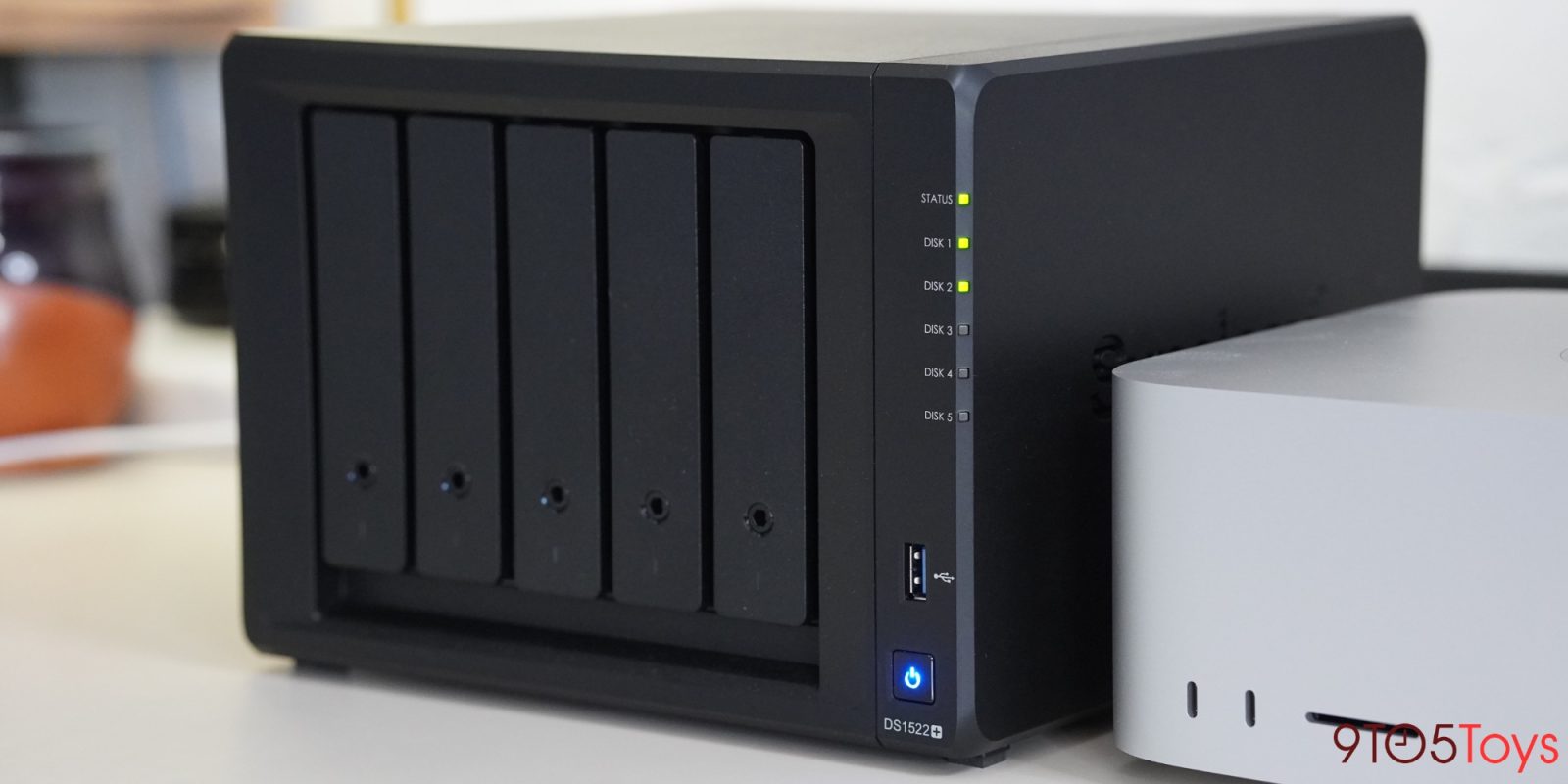 Buy now
Buy nowEarlier this summer, Synology launched an all-new NAS in the form of the 5-bay DS1522+. Arriving with user-upgradeable functionality to back the robust features out of the box, I’ve been spending some time with the new release and its impressive 10Gb Ethernet capabilities to see just how good Synology’s latest and greatest can perform.
Synology DS1522+ NAS hands-on review
Arriving on the upper echelon of its NAS lineup the new Synology DS1522+ is centered around a 5-bay design. Its outer shell is largely indistinguishable from other we’ve seen in the part from the brand, with the same plastic exterior. Though packed within the unassuming design is plenty of new tech, user-upgradable features, and all of the usual polish that Synology applies to its backup machines.
Being one of Synology’s latest machines, the new DS1522+ NAS arrives centered around an AMD Ryzen CPU. It’s a shift in the company’s chipset usage that we saw start a few years back with some even higher-end models, and now carries over to its flagship offerings thanks to a 2.6GHz R1600 Dual-Core processor.
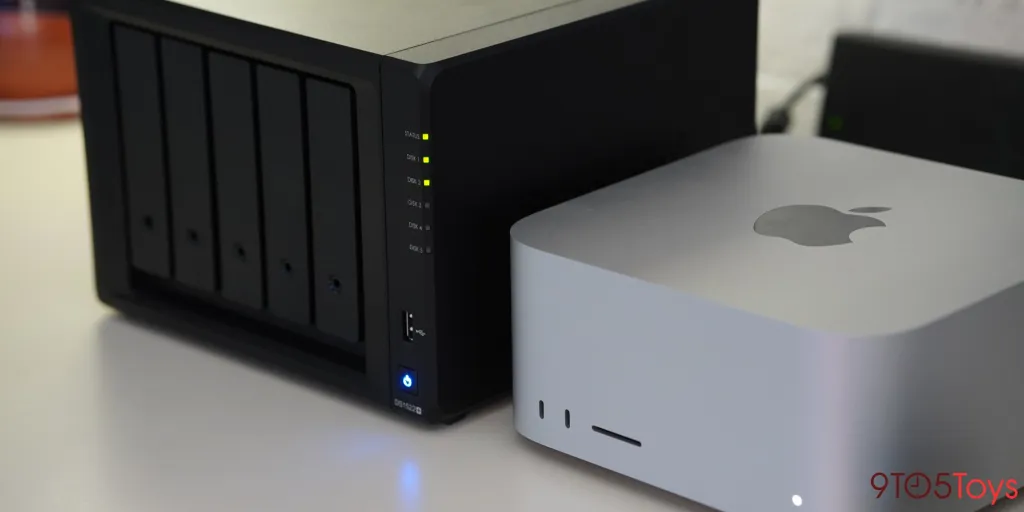
Aside from some of the more notable specs, here is a full rundown on what you can expect
Here are the specs
- 5 x 3.5/2.5″ SATA HDD/SSD Drive Bays
- 2.6 GHz AMD Ryzen R1600 Dual-Core
- 8GB of DDR4 RAM
- 4 x Gigabit Ethernet Ports
- 2 x USB 3.2 Gen 1 Type-A | 2 x eSATA
- RAID 0, 1, 5, 6, 10, Basic, Hybrid, JBOD
- Up to 736 MB/s Reads & 796 MB/s Writes
- AES-NI Encryption
- Dual M.2 2280 NVMe SSD Slots for Caching
- Synology DiskStation Manager OS
Upgrade
Like some of the other NAS that have come before it, Synology isn’t shying away from user-upgradable features with the new DS1522+. In fact, this is one of the more adjustable models we’ve seen as of late, at least as far as the more consumer side of the lineup is concerned. Everything from the RAM to SSD cache can be swapped out, and by far my favorite is the network interface card slot on the back. Four Gigabit Ethernet ports may be fine for some, but having the option to swap in a 10Gb Ethernet card and fully unlock the impressive specs is a real perk for me.
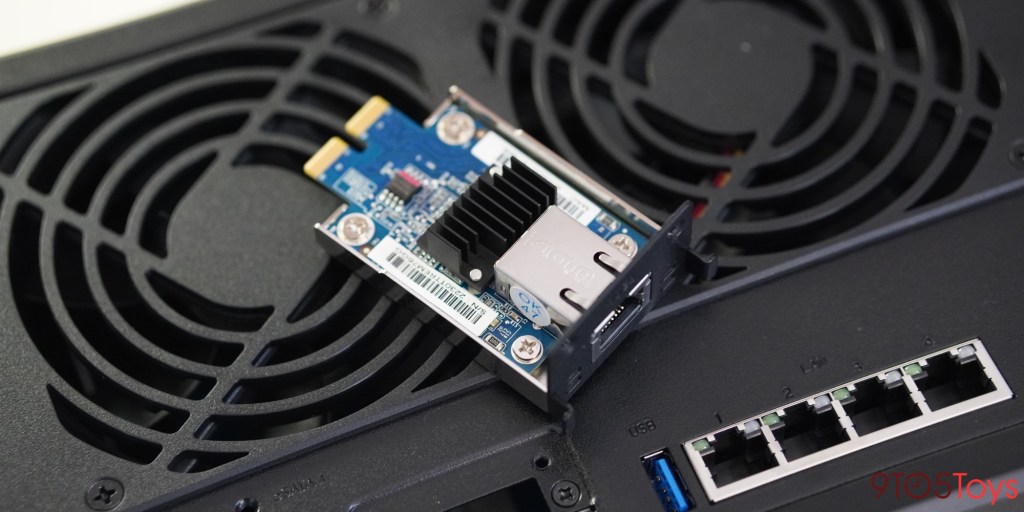
So whether the out of the box specs aren’t quite cutting it for you, or you want to give thing a boost years down the line, the commitment to upgradability is certainly appreciated. It’s always notable when companies let you fine-tune the experience out of the box, and Synology is giving you the option to build the perfect machine now, or upgrade years down the line as your needs change.
Software remains supreme amongst other NAS
You of course are also getting all of the usual features that Synology packs into its lineup of NAS. The DiskStation Management software is still the best solution out there for an off-the-shelf connected backup solution, and we recently took a hands-on look at what the latest major upgrade had in store with DSM 7. I’ve been writing for years what to expect from Synology on the user side, and it remains largely unchanged.
The company has all but perfected its interface with continued incremental updates since last year’s firmware milestone, and that all combines to deliver the best experience for a consumer NAS on the market. Though that isn’t specific to the DS1522+, as any other Synology NAS or even router will arrive with much of the same polish.
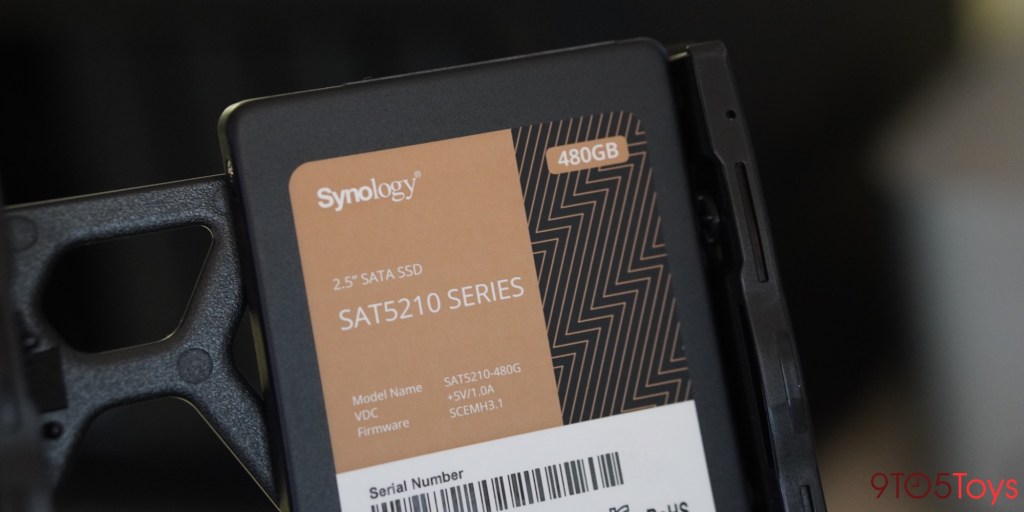
As for how I have the DS1522+ set up in my data center-level homelab, I have been testing the new NAS away from all of my other rack-mounted gear. It has largely set at my desk connected to a Mac Studio, which I’ll talk more about in a moment, but I’ve been enjoying getting to use the machine in a use case that’s a bit more inline with what I’d expect Synology would be hoping for from its users. There aren’t all too many home setups that are rocking over 100TB of storage, and so getting to test this one out away from my usual gear has really let me see what the Synology DS1522+ is capable of on its own.
Out of the box, I set up my new DS1522+ with a pair of Synology’s 480GB SAT5210 series 2.5-inch SATA solid-state drives. This is my first time taking these for a spin, and was the crucial aspect in getting to unlock the machine’s full power. I of course had to swap in the 10Gb Ethernet NIC, which is where those faster read and write speeds from an SSD come into play, and oh do the results speak for themselves. Being able to get over 700MB/s write speeds from a NAS is unheard of in my homelab, let alone being able to surpass the 1,000MB/s read speeds.
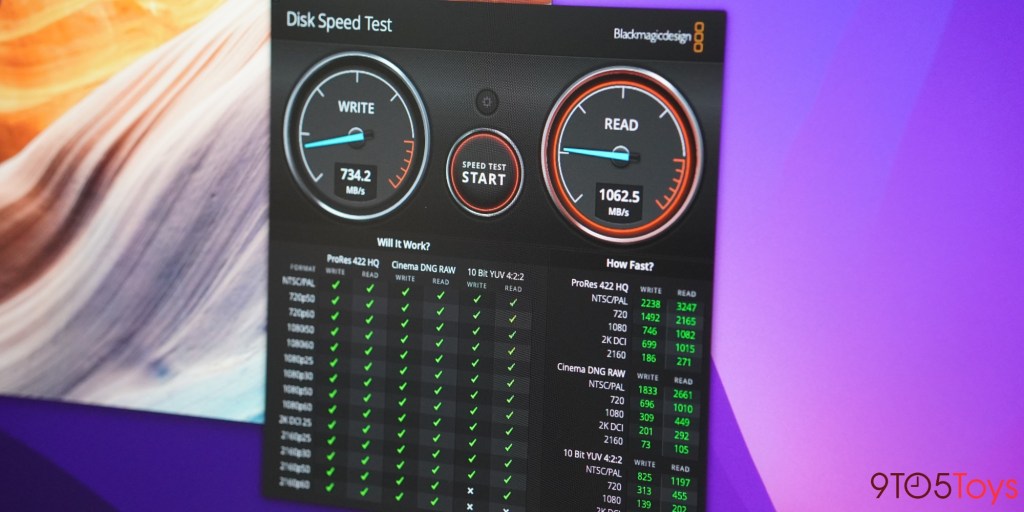
Hooked directly into the NAS, I paired the DS1522+ directly with a Mac Studio that is also outfitted with 10Gb Ethernet support. The combination of them allowed me to bypass the network switches in my setup and enjoy the full bandwidth. Not everyone is going to need to access files directly off an SSD NAS system, but anyone who works with video and other large files on the daily are absolutely going to appreciate the speed.
I also of course had to test Plex, and the results are exactly like you’d expect for a higher-end NAS like the DS1522+. I was able to transcode four of five videos at a time without issue, and had even more power to direct play content thanks to the faster transfer speeds of the SSDs. Of course, your results are going to vary when using standard 3.5-inch hard drives, but the flexibility of being able to take full advantage of both is one of the best selling points this time around.
gadgetnewsonline’ Take
I’ve tested out a wide range of NAS from Synology over the years, from the more affordable options ideal to get started up to business-grade solutions and everything in-between. Somewhere towards the pro side of that spectrum is the new DS1522+, and Synology has really delivered all of the features and performance I could have asked for.
Will it be the last NAS that anyone ever buys period? Of course not for everyone. But compared to other models out there, you’ll be able to get far more usage out of it as time goes by. Hell, I’m still using an over 5-year old NAS from Synology and it works better than most other options from other brands, and that isn’t even upgradable! So I’m sure the DS1522+ is primed to handle longer lifespans than I’ve seen from a consumer NAS. And for first-time NAS owners, you can be sure that this isn’t going to need to be replaced anytime soon.
It’s such a flexible package even right out of the box that you can leverage for everything from Plex to serving as a fast-paced backup server for footage and the like, then you throw in the upgradable features and it gets even capable, on top of being reliable down the road. This is honestly going to be one of the endgame servers in my setup for the time being, and this sentiment is going to be even more true for people who aren’t always on the cutting edge of the latest and greatest NAS like myself.
The upgradability alone is going to make this the last NAS that most users will need of the foreseeable future, which makes the $699.99 price tag a bit easier to stomach. That being said, I would highly recommend the Synology DS1522+ to anyone who needs the power or optional 10Gb Ethernet. And if you think you can get away with less, the DS220+ is still one of the best options out there, otherwise.
FTC: We use income earning auto affiliate links. More.






Comments